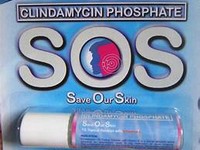itraconazole

itraconazole
CLINICAL USE
Antifungal agent
DOSE IN NORMAL RENAL FUNCTION
100–200 mg every 12–24 hours according to indication
PHARMACOKINETICS
Molecular weight :705.6 %Protein binding :99.8 %Excreted unchanged in urine : <0.03 Volume of distribution (L/kg) :10half-life – normal/ESRD (hrs) :20–40/Unchanged DOSE IN RENAL IMPAIRMENT
GFR (mL/MIN)
20 to 50 : Dose as in normal renal function 10 to 20 : Dose as in normal renal function <10 : Dose as in normal renal function DOSE IN PATIENTS UNDERGOING RENAL REPLACEMENT THERAPIES
CAPD :Not dialysed. Dose as in normal renal function HD :Not dialysed. Dose as in normal renal functionHDF/high flux :Not dialysed. Dose as in normal renal functionCAV/VVHD :Not dialysed. Dose as in normal renal function IMPORTANT DRUG INTERACTIONS
Potentially hazardous interactions with other drugsAnalgesics: possibly inhibits alfentanil metabolismAntibacterials: metabolism accelerated by rifabutin and rifampicin – avoid with rifabutin; possibly increased rifabutin concentration – reduce rifabutin dose; clarithromycin can increase itraconazole concentrationAnticoagulants: effect of coumarins enhancedAntidepressants: avoid concomitant use with reboxetineAntidiabetics: can enhance effects of repaglinideAnti-epileptics: concentration reduced by carbamazepine, barbiturates and phenytoin – avoid with phenytoinAntihistamines: inhibits mizolastine metabolism – avoid concomitant useAntimalarials: avoid concomitant use with artemether/lumefantrineAntipsychotics: possibly inhibits metabolism of aripiprazole – reduce aripiprazole dose; increased risk of ventricular arrhythmias with pimozide and sertindole – avoid concomitant use; possibly increased quetiapine concentration – reduce quetiapine doseAntivirals: concentration possibly increased by amprenavir; concentration of indinavir increased – may need to reduce indinavir dose; with ritonavir concentration of both drugs may be increased; concentration of saquinavir possibly increased; concentration reduced by efavirenzAnxiolytics and hypnotics: concentration of buspirone, midazolam and alprazolam increased – reduce buspirone doseBosentan: possibly increased bosentan concentration Calcium-channel blockers: negative inotropic effect possibly increased; metabolism of felodipine and possibly dihydropyridines inhibited; avoid concomitant use with lercanidipine and nisoldipineCardiac glycosides: concentration of digoxin increasedCiclosporin: metabolism of ciclosporin inhibited (increased plasma ciclosporin levels)Cytotoxics: metabolism of busulfan inhibited, increased risk of toxicity; possibly inhibits metabolism of vincristine, increased risk of neurotoxicity; possibly increased side effects with cyclophosphamide Diuretics: increased eplerenone levels – avoid concomitant use Ergot alkaloids: increased risk of ergotism – avoid concomitant use5HT 1 agonists: increased eletriptan concentration – avoid concomitant useIvabradine: possibly increased ivabradine levels – reduce initial doseLipid-lowering drugs: increased risk of myopathy with atorvastatin and .iTrAConAZoLE 403simvastatin – avoid concomitant use with simvastatin, and maximum atorvastatin dose 40 mg.1Sirolimus: concentration increased by itraconazole Tacrolimus: possibly increased tacrolimus levels Ulcer-healing drugs: absorption reduced by histamine H2 antagonists and proton pump inhibitors Vardenafil: possibly increased vardenafil concentration – avoid concomitant use ADMINISTRATION
Reconstition
– Route
Oral, IV infusion
Rate of Administration
Over 60 minutes Comments
Add 250 mg vial to 50 mL sodium chloride 0.9%, administer 60 mL (increased volume due to large displacement value) OTHER INFORMATION
Preparations absorbed at different rates: liquid is absorbed within 2.5 hours, capsules within 2–5 hoursOral bioavailability of itraconazole may be lower in some patients with renal insufficiency, e.g. those receiving CAPD Janssen-Cilag advise no dose alterations required in renal impairment as drug is extensively metabolised in the liver, and pharmacokinetics are unchanged in patients with ERF compared to normal
See how to identify renal failure stages according to GFR calculation
See how to diagnose irreversible renal disease
Home









